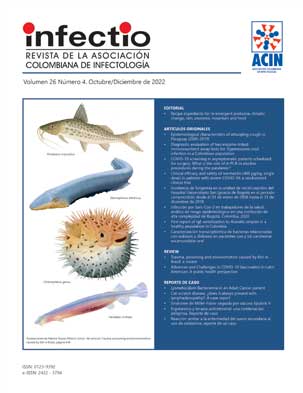Epidemiological characteristics of whooping cough in Paraguay (2005-2019)
Contenido principal del artículo
Resumen
Objective: To describe the epidemiological characteristics of whooping cough in Paraguay. Methods: 5327 samples of children and adults of all ages with suspected whooping cough and their contacts were included in this study. 745 samples were processed per microbiological culture and 4582 samples per microbiological culture and PCR. Results: The overall frequency of cases and their laboratory-confirmed contacts was 9.1%. A total of 361 cases and 123 close case contacts were detected as positive. Positive cases were more common in the < 2 months (70.6%), followed by the 2-6 month (11.9%). Conclusion: In Paraguay it is a public health problem that mainly affects children under 2 months, who have not yet received the vaccine. Knowing the epidemiology of whooping cough or pertussis helps us to know the burden of the disease as well as to measure the effectiveness and impact of vaccines.

